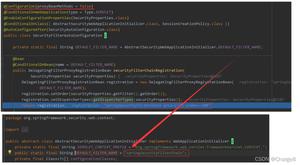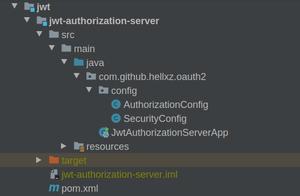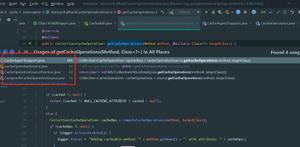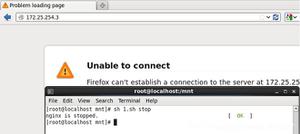利用spring-data-redis实现incr自增的操作
应该有不少人在使用spring-data-redis时遇到各种各样的问题。反正我是遇到了。
由于是隔了一段时间才写的本篇博客,也懒得去重现哪些错误场景了,下面凭着记忆写了几个我遇到的问题:
redis.clients.jedis.exceptions.JedisDataException: ERR value is not an integer or out of range
使用的RedisTemplate,做读写操作时候,都是要经过序列化和反序列化。
这时你使用redisTemplate.opsForValue().increment()就可能报错redis.clients.jedis.exceptions.JedisDataException: ERR value is not an integer or out of range了。
valueOper.get(key) 获取不到自增的值。
于是我去看了一下redis的官方文档,找到一个解决方法
使用spring-data-redis实现incr自增
/**
*
* @param key
* @param liveTime
* @return
*/
public Long incr(String key, long liveTime) {
RedisAtomicLong entityIdCounter = new RedisAtomicLong(key, redisTemplate.getConnectionFactory());
Long increment = entityIdCounter.getAndIncrement();
if ((null == increment || increment.longValue() == 0) && liveTime > 0) {//初始设置过期时间
entityIdCounter.expire(liveTime, TimeUnit.SECONDS);
}
return increment;
}
这样,上面的increment就是自增后的新知值,然后中间通过entityIdCounter.expire(liveTime, TimeUnit.SECONDS);设置过期时间。
当然这里比较讨厌,spring没有在创建RedisAtomicLong对象的时候一起设置过期时间。
可以看看其源码,new RedisAtomicLong最终调用的是这个方法:
private RedisAtomicLong(String redisCounter, RedisConnectionFactory factory, Long initialValue) {
Assert.hasText(redisCounter, "a valid counter name is required");
Assert.notNull(factory, "a valid factory is required");
RedisTemplate<String, Long> redisTemplate = new RedisTemplate<String, Long>();
redisTemplate.setKeySerializer(new StringRedisSerializer());
redisTemplate.setValueSerializer(new GenericToStringSerializer<Long>(Long.class));
redisTemplate.setExposeConnection(true);
redisTemplate.setConnectionFactory(factory);
redisTemplate.afterPropertiesSet();
this.key = redisCounter;
this.generalOps = redisTemplate;
this.operations = generalOps.opsForValue();
if (initialValue == null) {
if (this.operations.get(redisCounter) == null) {
set(0);
}
} else {
set(initialValue);
}
}
可以看到,初始值是0。
然后根进set方法
public void set(long newValue) {
operations.set(key, newValue);
}
可以看到,他是采用的operations.set(key, newValue);但是明明还有一个重载的方法void set(K key, V value, long timeout, TimeUnit unit);可以设置过期时间,为啥spring不提供呢。
为了解决这个问题,我们可以自己模拟RedisAtomicLong方法,去实现一个带有过期时间的自增方法。比较简单,读者自行撸代码吧,这里就不写出了。
补充知识:关于spring boot使用redis的increment()方法自增问题
需求是限制IP频繁访问某接口,用的方案是使用redis记录访问IP的值,先设定好初始值,每次访问自增,达到某限定值后,进行阻止。
用的是自定义工具类,使用spring封装的spring-data-redis进行操作,在对某key进行increment()方法时,报错:
redis ERR value is not an integer or out of range
代码逻辑如下:
Integer count = (Integer) redisUtil.get(ipAddress);//取得key的value
if (count == null){
redisUtil.set(ipAddress,1,10);
return false;
}else if(count == 3){
return false;
}else {
redisUtil.incr(ipAddress,1);
return false;
}
第一次进来,如果没有redis中没有数据,则设置key,value和time,key是ip, value初始值为1,有效时长为10秒。
如果没达到限制次数,则对key自增1。
redisUtil.incr()方法实现如下:
@Resource
private RedisTemplate<String, Object> redisTemplate; //这里使用的是redisTemplate
public void setRedisTemplate(RedisTemplate<String, Object> redisTemplate) {
this.redisTemplate = redisTemplate;
}
/**
* 递增
* @param key 键
// * @param by 要增加几(大于0)
* @return
*/
public long incr(String key, long delta){
if(delta<0){
throw new RuntimeException("递增因子必须大于0");
}
return redisTemplate.opsForValue().increment(key, delta);
}
开始以为是incr方法接受的参数是long型,但我传入的是INTEGER类型,但转换后还是没有解决问题,问题不是出在这,后来通过查找资料发现,Spring对Redis序列化的策略有两种,分别是StringRedisTemplate和RedisTemplate,其中StringRedisTemplate用于操作字符串,RedisTemplate使用的是JDK默认的二进制序列化。
大家都知道redis序列化是将key,value值先转换为流的形式,再存储到redis中。
RedisTemplate是使用的JdkSerializationRedisSerializer序列化,序列化后的值包含了对象信息,版本号,类信息等,是一串字符串,所以无法进行数值自增操作。
而StringRedisTemplate序列化策略是字符串的值直接转为字节数组,所以存储到redis中是数值,所以可以进行自增操作。
StringRedisSerializer源码:
public class StringRedisSerializer implements RedisSerializer<String> {
private final Charset charset;
public StringRedisSerializer() {
this(StandardCharsets.UTF_8);
}
public StringRedisSerializer(Charset charset) {
Assert.notNull(charset, "Charset must not be null!");
this.charset = charset;
}
public String deserialize(@Nullable byte[] bytes) {
return bytes == null ? null : new String(bytes, this.charset);
}
public byte[] serialize(@Nullable String string) {
return string == null ? null : string.getBytes(this.charset); //注意这里是字节数组
}
}
所以问题出在这里,我们需要自定义序列化策略,在application启动类中添加如下:
@Bean
public RedisTemplate<String, String> redisTemplate(RedisConnectionFactory factory) {
StringRedisTemplate template = new StringRedisTemplate(factory);
//定义key序列化方式
//RedisSerializer<String> redisSerializer = new StringRedisSerializer();//Long类型会出现异常信息;需要我们上面的自定义key生成策略,一般没必要
//定义value的序列化方式
Jackson2JsonRedisSerializer jackson2JsonRedisSerializer = new Jackson2JsonRedisSerializer(Object.class);
ObjectMapper om = new ObjectMapper();
om.setVisibility(PropertyAccessor.ALL, JsonAutoDetect.Visibility.ANY);
om.enableDefaultTyping(ObjectMapper.DefaultTyping.NON_FINAL);
jackson2JsonRedisSerializer.setObjectMapper(om);
// template.setKeySerializer(redisSerializer);
template.setValueSerializer(jackson2JsonRedisSerializer);
template.setHashValueSerializer(jackson2JsonRedisSerializer);
template.afterPropertiesSet();
return template;
费了2多小时才成功解决问题,RedisUtil.incr()能够成功对key进行自增了,如有错误之处请欢迎指出。
以上这篇利用spring-data-redis实现incr自增的操作就是小编分享给大家的全部内容了,希望能给大家一个参考,也希望大家多多支持。
以上是 利用spring-data-redis实现incr自增的操作 的全部内容, 来源链接: utcz.com/z/323026.html









